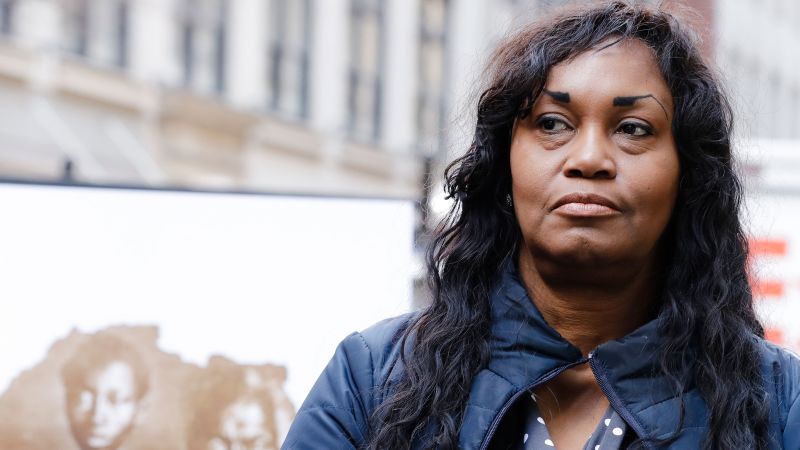- Get link
- X
- Other Apps
- Get link
- X
- Other Apps

Harvard University has agreed to relinquish possession of a set of 175-year-old photographs, believed to be the earliest images of enslaved people, to the International African American Museum in South Carolina. This landmark decision marks the end of a protracted legal battle initiated by Tamara Lanier, who claims to be a direct descendant of one of the individuals depicted in the photographs.
The photographs, known as daguerreotypes, feature individuals identified as Renty (whom Lanier calls "Papa Renty") and his daughter Delia. They were taken in 1850 while Renty and Delia were enslaved in South Carolina.
Key Highlights of the Settlement:
- Transfer of Ownership: The daguerreotypes will be transferred from Harvard's Peabody Museum of Archaeology and Ethnology to the International African American Museum.
- End to a 15-Year Battle: The agreement concludes a 15-year legal struggle between Lanier and Harvard University.
- Historic Victory: Lanier’s attorney, Joshua Koskoff, hailed the settlement as an "unprecedented" victory for descendants of enslaved people in the US.
Koskoff emphasized the unique nature of the case, stating, "I think it’s one of one in American history, because of the combination of unlikely features: to have a case that dates back 175 years, to win control over images dating back that long of enslaved people — that’s never happened before."
A Question of Ownership and Ethics
A central question in the legal proceedings was whether Harvard should be allowed to retain ownership of images that were created under dehumanizing circumstances and without the consent of the subjects.
While Massachusetts courts initially sided with Harvard on the technicality of ownership, they allowed Lanier to pursue claims for emotional damages, acknowledging the university's role in the exploitation surrounding the creation of the daguerreotypes.
Harvard's Perspective
Harvard stated that it had been working to relinquish ownership of the images for some time, aiming "to put them in the appropriate context and increase access to them for all Americans." The university acknowledged Lanier's role in sparking important conversations about the images, although it noted that it has not confirmed her familial connection to the individuals depicted.
Reactions to the Settlement
The announcement of the settlement was met with emotional responses. Lanier, holding a portrait of Papa Renty, stood alongside Susanna Moore, the great-great-great-granddaughter of Harvard biologist Louis Agassiz, who commissioned the photographs.
Agassiz's theories on racial difference were once used to support slavery. Both women praised the resolution as a step towards justice and reconciliation.
“This is a moment in history where the sons and daughters of stolen ancestors can stand with pride and rightfully proclaim a victory for reparations,” Lanier said. “This pilfered property, images taken without dignity or consent and used to promote a racist psychoscience will now be repatriated to a home where their stories can be told and their humanity can be restored.”
Moore called the images captured by her ancestor, Agassiz, a “deeply racist project,” adding, "This victory reminds us that the meaning of such objects in museums can and should change. This woman standing next to me, she knew all along she was not small and she was not alone."
The Future of the Daguerreotypes
Tonya M. Matthews, CEO of the International African American Museum, described Harvard's decision as a moment "175 years in the making." The museum has pledged to collaborate with Lanier on how the story of the images will be told.
While the financial terms of the settlement remain undisclosed, it is clear that this agreement represents more than just a transfer of property. It signifies a crucial step towards acknowledging the painful legacy of slavery and empowering descendants to reclaim their history.
This settlement serves as a powerful reminder that the pursuit of justice, however long it takes, can lead to meaningful change and reconciliation. It underscores the importance of institutions grappling with their historical ties to slavery and actively working towards a more equitable future. The voices of the enslaved, silenced for so long, are finally beginning to be heard.
Tags: Harvard University, Enslaved People, African American Museum, Renty, Papa Renty, Delia, Tamara Lanier, Daguerreotypes, South Carolina, Human Rights
Source: https://edition.cnn.com/2025/05/29/us/harvard-lawsuit-slave-photos-settlement-hnk
African American Museum
Daguerreotypes
Delia
Enslaved People
Harvard University
Human Rights
Papa Renty
Renty
South Carolina
Tamara Lanier
- Get link
- X
- Other Apps
Comments
Post a Comment